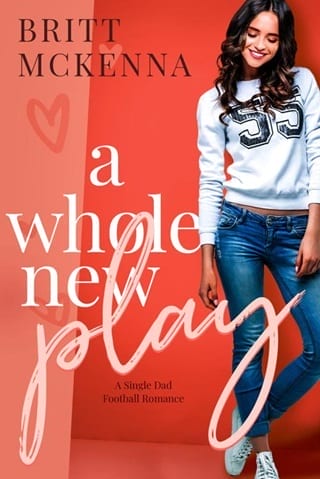19 Cork Street
19 Cork Street
As Detective Sergeant Timothy Peel set off for Plymouth that February afternoon, the man who had asked him to accidentally
misplace Charlotte Blake's legal pad was walking past the parade of luxury shops lining Burlington Arcade in Mayfair. He had
returned to London on pressing business, namely, to recruit the final member of his operational team. The negotiations promised
to be arduous and the price steep. Unlike Anna Rolfe, Nicholas Lovegrove never performed for free.
The prominent art consultant suggested lunch at the Wolseley, but Gabriel insisted they meet at his office instead. It was
located in a redbrick building in Cork Street, two floors above one of London's most important contemporary art galleries.
Lovegrove's receptionist was not at her desk when Gabriel arrived. His two underlings, both Courtauld-trained art historians,
were likewise absent.
"As requested, Allon, it's just the two of us." They withdrew to Lovegrove's inner sanctum. It was like an exhibition room
at the Tate Modern. "What is this all about?"
"A friend of mine is looking to unload a few paintings and requires the assistance of an experienced, trustworthy consultant.
Naturally, I thought of you."
"What sort of paintings?"
Gabriel recited the names of six artists: Amedeo Modigliani, Vincent van Gogh, Pierre-Auguste Renoir, Paul Cézanne, Claude
Monet, and Henri de Toulouse-Lautrec.
"Where are the paintings now?"
"They will soon be at the owner's villa on the Costa de Prata."
"Do you at least have photographs?"
"Not yet."
Lovegrove, with his well-tuned ear for art world gobbledygook, was dubious. "Does the owner have a name?"
"Anna Rolfe."
"Not the violinist?"
"One and the same."
"Don't tell me the paintings belonged to that awful father of hers."
"I'm afraid so."
"That means they're toxic."
"Which is why you're going to dispose of them with the utmost discretion at Galerie Ricard in the Geneva Freeport."
Lovegrove regarded Gabriel speculatively across the expanse of his desk. "I suppose this has something to do with that Picasso?"
"What Picasso, Nicky?"
"There is no Picasso?"
"Never was."
"And the six paintings by six of the greatest artists who ever lived?"
"They don't exist, either." Gabriel smiled. "Not yet, at least."
Lovegrove tugged at his French cuff while Gabriel explained the plan. The briefing contained no glaring omissions of fact
or intent. Nicholas Lovegrove, a major figure in the art world, deserved nothing less.
"It might actually work, you know. It does, however, contain one serious flaw."
"Only one?"
"If everything goes according to plan, no money will change hands."
"That would be a crime, Nicky."
"No money, no commission. You see my point?"
"I was hoping you might agree to help me out of the goodness of your heart."
"You have me confused with someone else, Allon."
Gabriel sighed. "I will restore your Gentileschi for a flat fee of one hundred thousand euros. But only if we're able to recover
the Picasso."
"You will receive fifty thousand for the Gentileschi, regardless of whether we find that painting."
"Deal," said Gabriel. "But I'll need the money in advance to cover my operational expenses."
Lovegrove took up a pen. "Where shall I send it?"
Gabriel recited the number and routing information for his much-depleted account at Mediobanca of Milan.
"It will be there by the close of business tomorrow afternoon."
"You have my gratitude, Nicky."
"What I want is your word that my role in l'affaire Picasso will never come to light."
"You have that, too."
Lovegrove screwed the cap onto his pen. "When would you like me to contact Monsieur Ricard?"
"There are six things I need to take care of first."
"The paintings?"
Gabriel nodded.
"In that case," said Lovegrove, "I suggest you get busy."
***
The crime of forgery requires more than raw artistic talent. The forger must know everything there is to know about the painter
he is attempting to imitate—his technique, his palette, the type of canvases and stretchers he preferred. Plenty of forgers
used contemporary canvases stained with tea or coffee, but Gabriel insisted on age-appropriate supports. A canvas from the
1950s wouldn't do for, say, a Cézanne or a Monet. Nor would Gabriel ever dream of using Italian or Dutch linen when forging
a painting by a French artist. Yes, finding such canvases could be a time-consuming and costly endeavor. But using the wrong
support was how a forger became a convict. Besides, Gabriel had his standards.
Equally challenging for the forger was the creation of a believable provenance that would explain the reemergence of a previously
unknown work by a prominent artist. Gabriel also wished to leave the impression that the six paintings might have been seized
from their rightful owners during the occupation of France. Therefore, a certain expertise was required. Fortunately, he knew
an art historian who specialized in the wartime French art market. They met that evening at a brasserie on the rue Saint-Honoré.
The historian insisted on sitting outside in the frigid night air so she could smoke her wretched cigarettes.
"Six fictitious provenances for six forged paintings?" asked Naomi Wallach. "Are you forgetting, Monsieur Allon, that I am
currently employed by the French government?"
"I have no intention of profiting from my crime. I will use the forgeries only to make my approach to Galerie Ricard and recover
the Picasso."
She drew a pen and notebook from her handbag. "I'll need the names of the artists, the titles, and the dimensions."
"I can't tell you anything about the motifs or dimensions until I acquire the canvases."
"What about the artists?"
Gabriel recited six names: Modigliani, Van Gogh, Renoir, Cézanne, Monet, and Toulouse-Lautrec.
Naomi looked up from her notebook. "Can you really—"
"Next question."
"Where did the paintings end up after they left France?"
"Zurich, I imagine."
"Private collection?"
"As private as it gets."
"And now?"
"Thence by descent to present owner."
***
Gabriel acquired his first canvas, a meritless nineteenth-century French School still life, the following morning at an antiques
shop near the Jardin du Luxembourg. His second canvas, a landscape, also nineteenth century, he found early that afternoon
in the sprawling Paris Flea Market. He placed the paintings in the back of his rented Volkswagen estate car. Then, after a
stop at the Sennelier artists' supply shop on the Quai Voltaire, he headed south to Avignon.
He spent the night at the Hotel d'Europe and in the morning purchased his third canvas, another still life, at an art gallery
on the rue Joseph Vernet. An all-too-brief visit to nearby Aix-en-Provence yielded a fourth canvas—a large but uninspired
seascape—and a stop for lunch in Fréjus resulted in the unexpected acquisition of a lovely canvas by an unknown French flower
painter.
He found his sixth canvas, a truly terrifying portrait of an elderly Proven?al woman, at a gallery in Nice and arrived in Venice shortly after 2:00 a.m. The children awakened him at half past seven and insisted he walk them to school. Returning home, he removed the six canvases from their frames and ordered six faux antique replacement frames from Girotto Cornici of Milan. Then, scraper in hand, he reduced the work of six long-dead French artists to a pile of paint flakes.
Five of the canvases he covered in ground and underpaint, but the sixth he left unprimed, as that was Cézanne's preference.
The master's usual palette contained eighteen paints. Gabriel used the same combination of paints—by the same paint maker,
Sennelier of Paris—when executing a pastiche of one of Cézanne's many Proven?al landscapes. He thought his brushwork was a
touch hesitant, the telltale mark of a forgery, so he scraped the image from the canvas and swiftly executed another. Chiara
agreed it was in every respect superior to the first.
"And you wonder why your son has no desire to become a painter."
"I can teach him everything he needs to know."
"Talent like yours can't be taught, darling. You were born with it."
"So was he."
Gabriel loaded his brush with peach black—so named because it was made with charred peach pits—and stretched his hand toward
the bottom right corner of the canvas.
"Shouldn't you practice it once or twice?" asked Chiara.
Frowning, Gabriel executed Cezanne's signature as though it were his own.
"Freak," she whispered.
With his Nikon camera Gabriel documented his crime, lest his handiwork ever leak onto the legitimate art market. He emailed
one of the photographs to Naomi Wallach, and an hour later she sent him her first fictitious provenance. The last line read
"Thence by descent to present owner."
Gabriel waited until 8:10 p.m. before ringing the owner's latest personal assistant. She took the call in a backstage dressing room at the Oslo Concert Hall, where she was alone with a multimillion-dollar Stradivarius violin. Her first day on the job, she said, had gone much better than expected.
"I have to say, she's not the monster you made her out to be. In fact, she's really quite charming."
Gabriel killed the connection and, annoyed, cleaned his brushes and palette. Surely, he told himself, she had been referring
to a different Anna Rolfe.
 Fullepub
Fullepub 



